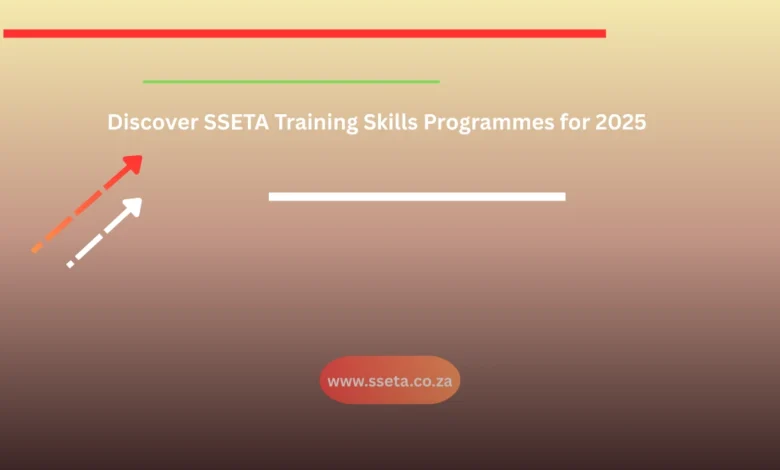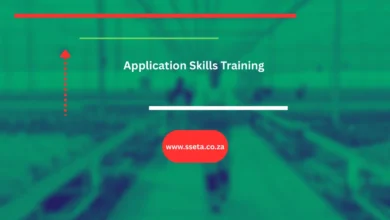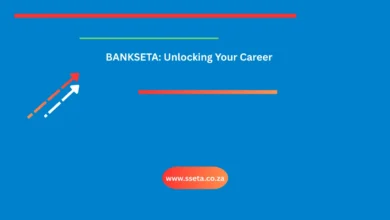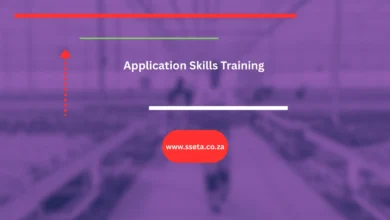Discover SSETA Training Skills Programmes for 2025 (Grade 11 and Beyond)

When you’re in Grade 11, life can feel like a waiting game — the last big step before matric, university applications, or jumping straight into the world of work. But here’s the secret: you don’t have to wait. In 2025, opportunities for training, skills development, and early career entry are more accessible than ever. If you make smart choices now, you can set your future in motion long before you cross the graduation stage.
Think of this as your guidebook — a carefully mapped-out route through vocational training, emerging careers, lifelong learning, and funding options, all designed to help you thrive in a fast-changing job market.
Training and Skills Programmes for 2025
Chapter 1: The Career Landscape of 2025 — Why Skills Are Your Superpower
In the past, having a matric certificate was enough to secure many jobs. Today, the story is different.
Technology, automation, and global competition have reshaped the economy. Jobs disappear, change, and reappear in different forms. Employers now look for people who not only have a qualification but also practical, adaptable, and future-proof skills.
Emerging Industries to Watch
These aren’t just “jobs of the future” — they’re jobs of now. Choosing training aligned with these sectors means you’re aiming where the opportunities are.
Chapter 2: Automation & AI — Friend or Foe?
It’s impossible to talk about the future without mentioning artificial intelligence. Yes, AI will automate some repetitive tasks. But it will also create new opportunities for people who can work alongside it.
For example:
- Customer service agents who manage AI chatbots.
- Data technicians who interpret AI-generated reports.
- Digital marketers who use AI tools to create content.
Instead of worrying about AI replacing you, focus on learning to work with it. That’s how you future-proof your career.
Chapter 3: The Skills That Will Matter Most
By 2025, the most valuable employees will be those who combine technical ability with human skills.
Top Skills to Develop:
- Digital literacy — Comfort with software, online systems, and tech tools.
- Critical thinking — The ability to analyse problems and make smart decisions.
- Communication — Writing, speaking, and listening effectively.
- Adaptability — Learning quickly when things change.
- Collaboration — Working productively with diverse teams.
These are skills you can start developing right now, both inside and outside of formal education.
Chapter 4: Vocational Training — Learn by Doing
Vocational training is the fast lane to employment. It’s practical, hands-on, and often shorter than a full degree. With Grade 11, you can already enter many programmes.
In-Demand Trades
- Electricians: Install and maintain electrical systems. Training: 1–2 years.
- Plumbers: Work with water and piping systems. Training: 1–2 years.
- Welders: Join metals for construction and manufacturing. Training: 1 year+.
These trades offer steady work, competitive pay, and self-employment opportunities. Many training centres also include apprenticeships so you can earn while learning.
Digital & IT Skills
Technology roles aren’t just for “computer geniuses.”
With short courses, you can enter fields like:
- IT Support
- Cybersecurity
- Software Development (via coding bootcamps)
- Cloud Computing
Many of these roles start with entry-level certificates that don’t require matric.
Healthcare Support
If you enjoy helping people:
- Medical Assistants support doctors and nurses.
- Phlebotomists specialise in drawing blood for tests.
- Caregivers work with elderly or disabled patients.
Training is short (often under a year) but leads to essential, rewarding work.
Discover SSETA Training Skills Programmes for 2025
Some sectors are experiencing serious growth:
- Technology & Digital Services — From data analysis to software support.
- Renewable Energy — Solar, wind, and green engineering roles.
- Healthcare — Beyond doctors and nurses, support roles are booming.
- Skilled Trades — Electricians, plumbers, and welders remain essential.
- APPLICATION PROCESS
Chapter 5: Post-Secondary Education — The Long Game
For students aiming at higher-level careers, college and university remain powerful options. They take more time but can open more doors.
College Diplomas & Advanced Certificates
Practical and industry-focused, these 1–3 year programmes cover:
- Business Administration
- Engineering Technology
- Graphic Design
- Hospitality Management
They blend theory with workplace skills and often have strong employer links.
University Degrees
Degrees provide deep knowledge and broader career mobility. Popular choices include:
- Computer Science
- Education
- Engineering
- Business & Economics
Even if you only have Grade 11 now, bridging programmes can help you qualify.
Chapter 6: Apprenticeships — Earning While Learning
Apprenticeships combine paid work experience with classroom learning. They’re especially strong in trades like:
- Automotive repair
- Electrical installation
- Carpentry
You learn from experienced mentors, gain recognised qualifications, and avoid big student debt.
Chapter 7: Lifelong Learning — Staying Relevant
Your learning journey doesn’t end with your first qualification. The world changes too quickly for that. Upskilling (learning new abilities in your current field) and reskilling (switching to a new field entirely) keep you competitive.
Online Learning & Micro-Credentials
Platforms like Coursera, Udemy, and edX offer:
- Flexible schedules
- Industry-recognised short courses
- Skills-based certificates
You can add these to your CV to stand out.
Professional Certifications
For example:
- IT: CompTIA, Cisco, AWS certifications
- Project Management: PMP, PRINCE2
- Finance: ACCA, CIMA
These show employers you meet specific industry standards.
Soft Skills Workshops
Short training in leadership, teamwork, and communication can make you a more effective employee — and potential leader.
Chapter 8: Funding Your Training
Money shouldn’t be the reason you miss out on opportunity. There are several ways to finance your studies.
Scholarships & Bursaries
These don’t need to be repaid. They may be based on:
- Academic achievement
- Financial need
- Specific career fields
Government Support & Student Loans
Many governments (including South Africa’s NSFAS) offer grants and low-interest loans.
Employer-Sponsored Training
Some companies pay for courses to train their staff. Others reimburse tuition costs after completion.
Chapter 9: Building Your 2025 Career Plan
Now that you know the options, it’s time to create your personal roadmap.
Step 1: Identify your interests and strengths.
Step 2: Research industries with growth potential.
Step 3: Match your interests to in-demand skills.
Step 4: Choose training pathways — short courses, diplomas, or degrees.
Step 5: Secure funding through bursaries, scholarships, or work-study.
Step 6: Commit to ongoing learning to keep up with change.
Final Thoughts — Your Future Is a Series of Choices
Leaving Grade 11 in 2025 doesn’t have to feel like stepping into the unknown. You have multiple routes — each with its own rewards. Whether you go straight into vocational training, start a degree, or combine work with part-time learning, the important thing is to keep moving forward.
The job market will always evolve, but so can you. By choosing your skills strategically, seeking opportunities early, and embracing lifelong learning, you can turn this uncertain moment into the beginning of a confident, well-planned future.
Three Key Takeaways:
- Aim for growth sectors — tech, renewable energy, healthcare, trades.
- Balance practical skills and theory for a well-rounded career.
- Keep learning — the best careers are built on continuous development.
Action Tip: Before the year ends, shortlist at least three training programmes and find out their entry requirements and funding options. Your future self will thank you.




